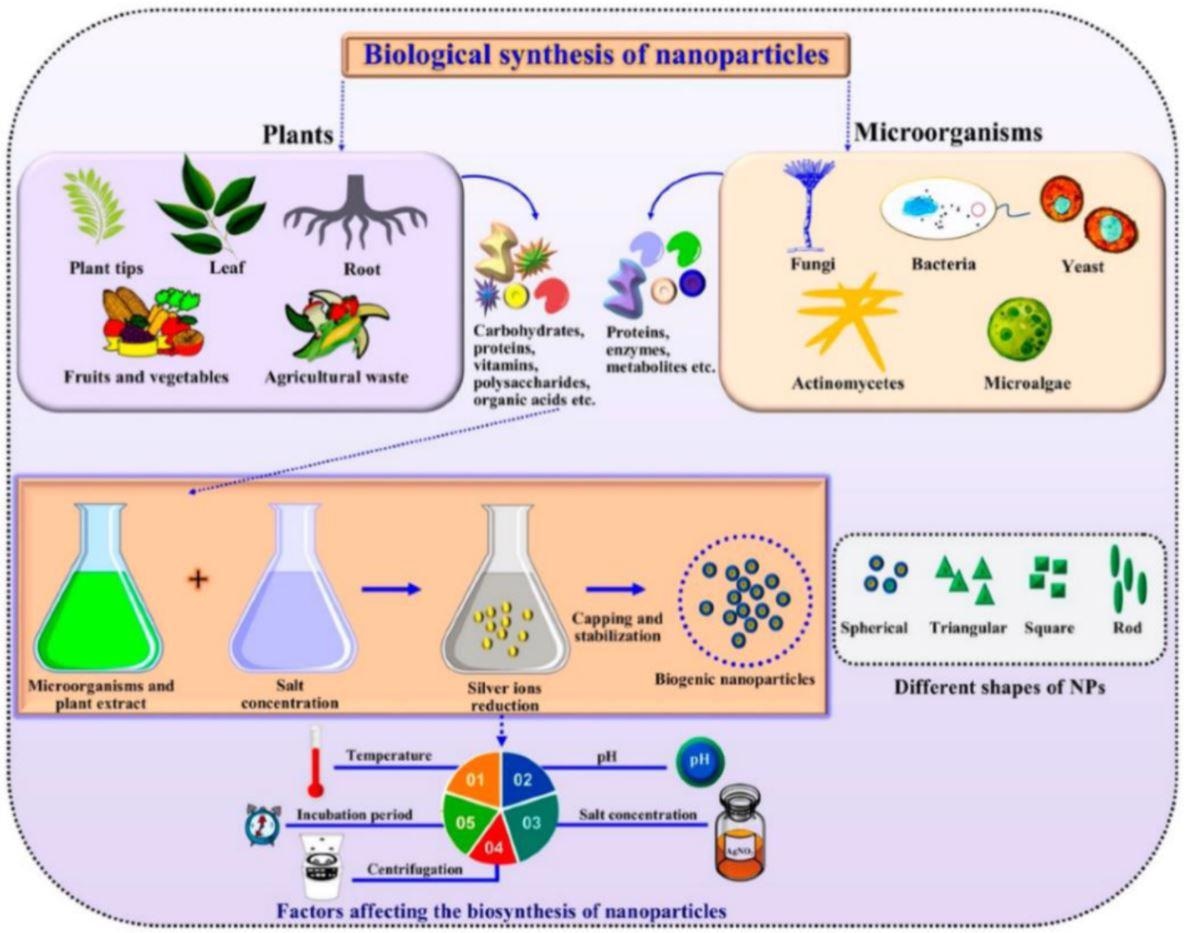A novel finding from the Journal of Fungi has found that metal nanoparticles can be used as fungal inhibitors.

The Problem of Fungi in Agriculture
Diseases and pests caused by insects, fungi, microbes, microorganisms, and other pathogenic organisms in the surroundings have been the greatest challenge to agriculture since its inception. This results in large crop failure, represented in low-profit production.
Phytopathogenic fungi are among the pathogens that cause a variety of agricultural diseases. Fungi are adaptable to any media and can colonize many substrates or mediums in harsh or dangerous environmental circumstances. Furthermore, they can impact crops at several phases, from planting to growth and production to postharvest.
Traditional Method to Combat Fungus
Phytopathogenic fungi are mainly managed with chemical agents that are inexpensive and easy to purchase on the market. Nevertheless, their indiscriminate usage has resulted in multiple issues, including environmental contamination, animal and human diseases, and ecological instabilities.
Biocontrol, plant extracts, and essential oils are increasingly applied to manage phytopathogen fungi that are environmentally benign and efficient.
Such options have proven advantageous and are regarded as an optimal approach. However, several obstacles, such as the impact of delay, high operational expenses, and continual deployments, make them more vulnerable.
Nanoparticles as The Right Answer
Nanoparticles are a recently researched and applied route in agriculture, with nanomaterials growing in importance since their physicochemical characteristics differ greatly from bulk materials. Furthermore, the structure, size, and content of nanomaterials impact their physicochemical characteristics.
Herefore, the physicochemical properties of nanomaterials are determined by their form, size, and content. Due to these characteristics, nanomaterials are beneficial in a variety of fields.

A generalized representation of the green synthesis of metallic nanoparticles
Effective Nanomaterials
Various nanomaterials have demonstrated remarkable antifungal properties, making them viable for controlling phytopathogenic fungi. Several metallic nanoparticles have been created and employed to inhibit phytopathogenic fungus thus far.
Though using nanomaterials in agriculture is a novel method of controlling phytopathogenic fungi, they have demonstrated excellent antifungal efficacy against a diverse range of phytopathogenic fungi. Metal nanoparticles have been used successfully to combat a variety of diseases.
Multiple research on the use of metal nanoparticles to inhibit phytopathogenic fungus in agriculture is being conducted in this direction. Various nanoparticles have previously been employed to combat phytopathogenic fungus. For example, Ag, Cu, Fe, Zn, Se, Ni, and Pd have demonstrated exceptional antifungal activity.
The form of the produced Cu nanoparticles is primarily spherical and demonstrates exceptional antifungal activity. The concentration of Cu nanocomposites is another element that can limit the growth of phytopathogenic fungus.
Ag nanoparticles have received the greatest attention as antifungal agents within metallic nanoparticles, preceded by Cu.
Future Research
Nanoparticles for this application tend to be spherical and polydisperse in size. In the future, it will be critical to manufacture and test nanoparticles of various shapes and sizes and homogeneity, as these characteristics are known to affect antimicrobial activities.
Currently, the nanoparticles tested as antifungal agents are mostly monometallic. As a result, researchers believe it is critical to manufacture and test bimetallic or trimetallic nanomaterials to manage phytopathogenic fungi to understand their effects.
Continue reading: Discovering Novel Insecticides with Nanoparticles.
Reference
Luna, A., et al. (2021) Metal Nanoparticles as Novel Antifungal Agents for Sustainable Agriculture: Current Advances and Future Directions. Published: 1 December 2021. Journal Fungi 2021, 7(12), 1033; https://www.mdpi.com/2309-608X/7/12/1033
Disclaimer: The views expressed here are those of the author expressed in their private capacity and do not necessarily represent the views of AZoM.com Limited T/A AZoNetwork the owner and operator of this website. This disclaimer forms part of the Terms and conditions of use of this website.